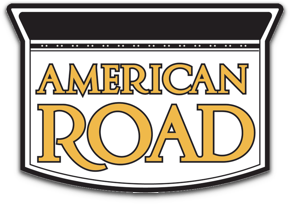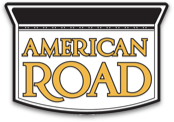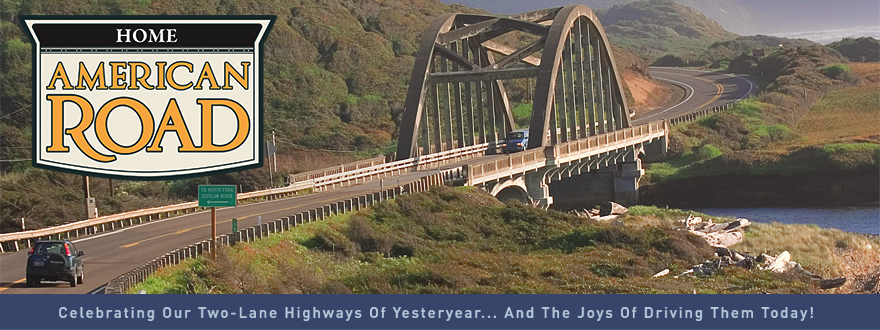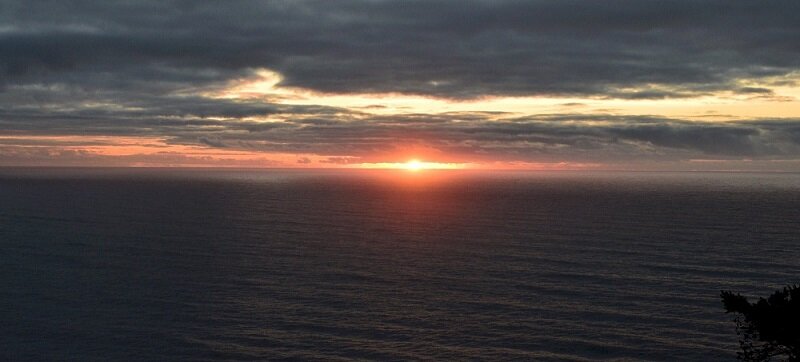-
Posts
41 -
Joined
-
Last visited
-
Days Won
5
Road Warrior last won the day on May 23 2022
Road Warrior had the most liked content!
About Road Warrior
- Birthday 04/09/1960
Contact Methods
-
Website URL
http://www.pacific-hwy.net
-
Yahoo
roadwarrior@sunset-hwy.com
Profile Information
-
Gender
Male
-
Location
Seattle
-
Interests
Riding my motorcycle on the old highways. Exploring old roads and trails.
Recent Profile Visitors
3,255 profile views
Road Warrior's Achievements

Day Tripper (1/6)
10
Reputation
-
Vigilante Trail In 1915, Yellowstone National Park was opened for automobile traffic, and in the first 10 days, 321 cars entered the park; 151 at the west entrance, 86 at the north entrance, 83 at the east entrance and 1 car entered at the south entrance. Vacationers who were traveling from the Pacific Northwest on the Yellowstone Trail could use a cut-off road southeast of Butte, Montana, which was the shortest and most direct route to the west entrance of the park. This cut-off road was also a shorter distance than the main route to Livingston and the north entrance to the park at Gardiner that was promoted by the YTA. To capitalize and to increase the traffic on this cut-off, the commercial interests of Butte organized a meeting on October 22, 1919, where 250 citizens from Silver Bow, Jefferson and Madison counties attended. The result of the meeting was the formation of the Vigilante Trail Association. The route was touted as a road, where almost every mile was the scene of a robbery, murder or hanging. The trail began about 20 miles southeast of Butte at the junction of the Yellowstone Trail, at Cedar Ridge, and ran through the towns of; Twin Bridges, Sheridan, Nevada City, Virginia City, Ennis and terminated at the west entrance to Yellowstone Park. The sign adopted for the route was a circle painted with red, white and blue stripes and included the mystic figures, "3-7-77." which was used by the Vigilantes to warn the criminals that their presence in the country was no longer desirable. Near this junction of the two trails was the reputed spot where Sacagawea was captured by a hostile tribe and had to be rescued from her captors. Years later, she guided Lewis and Clark up the Jefferson River and they passed near the spot where she had been taken. The trail ran on the old Ruby Valley Road through the historic gold mining district, of Alder Gulch and Virginia City. Virginia City is located 7 miles west of Alder Gulch and is one of the oldest settlements in the West. In the 1860s, it was the temporary home for thousands of placer miners. This was a lawless place, where robbery and murder were the order of the day. The Road Agents, as the organized desperadoes were called, had control of the sheriff and the justice of the peace, and the good citizens were left without any protection for their rights, their property or their lives. It all began with the discovery of gold on Grasshopper Creek near Bannack and at Alder Gulch near Virginia City in the spring of 1862. Word of the discovery reached the masses by the summer of 1863, which triggered a stampede of thousands of prospectors rushing to the region. Among the later arrivals were desperadoes and outlaws, who scenting the prey from afar, flew like vultures to the carcass. From the west came a gang of thieves who would become the "Road Agents" and would terrorize and rob people who were traveling between Virginia City and Bannack. Between these two mining camps, a correspondence was kept and the roads throughout the territory were under constant surveillance of the agents. They devised a system that would mark the horses, men and coaches that were worthy of robbing, and that information would be passed to the highwaymen in time before their victims could escape. The road agents, who were also known as the “Innocents,” levied toll on every traveler by robbing and murdering with the greatest impunity. At every turn from Bannack to Virginia City, they held up stages, pack trains and individual miners, killing those who resisted, and beat those who had nothing. So complete their sway, so stern their rule, more than 200 lives were lost along that road. Sheriff Henry Plummer was the chief and everyone knew it. He and some of his men eventually were hung at Bannack in 1864. In 1870, the first chief justice of Montana Territory Hezekiah L. Hosmer had said; "The attraction brought those who came to work and those who came to profit off the labor of others. Had the convicts been set free by the approach of Napoleon, on the condition they burn Moscow, and had instead been thrown upon these new settlements, it could not have been worse than it was with the crowd that entered and took control of Bannack and Virginia City in 1862 and 1863.” If a man brought suit to recover a stolen horse, he would be apt to meet in court with a band of dishonest witnesses who would swear that the contested property belonged to the thief. Thus the man was not only robbed of his property but had to pay the expenses of the suit as well. Gambling and wild women were the main features of every mining camp and these activities were another place for the miners to lose their money. Ladies of the evening plied their trade in the open daylight and the brothels were the lures where many a man was entrapped for robbery and murder. Dance houses sprang up and everyone who visited these establishments were in some way relieved of the money they brought with them. Many good men who dared to show any signs of disgust were shot down by a member of the gang at the first opportunity. The headquarters of these desperadoes was at the Daley ranch otherwise known as the “Robbers’ Roost.” The old inn was located beside the road 4 miles southeast of Sheridan. Of all the villains and criminals who rested at the roost, the most renowned and despised of them all was George Ives, a ruthless servant of the devil. This state of affairs could not go on forever. All of the friends of justice were relentlessly, threatened and watched by the agents. Things began to change when Virginia City and Nevada City formed a Vigilante Committee. The committee was approved and supported by all those who had anything to lose, or who thought their lives were at risk. Merchants, miners, mechanics and professional men alike joined in the movement until, within an incredibly short space of time, the Road Agents were in a state of constant fear George Ives was the first victim of the newly formed vigilante committee. They captured him not far from Robbers’ Roost. Ives was transported to Nevada City where they put him on trial. Ives begged to be taken to Virginia City claiming that the populace of the lower town must, be prejudiced against him, for he had once killed a dog that had bit him while he was there. He was loaded with logging chains, hauled into court and on December 21, 1863, he was hanged. His companions in crime, Red Yager and G. W Brown, the bartender at the Robbers' Roost, were rounded up and hanged within the next two weeks. The Vigilantes, now warmed up to their work, roamed up and down the trail, seeking desperadoes to devour. They traveled south to Bannack where they hanged Sheriff Plummer and his two deputies, Ray and Stilson. They then rode over the pass to Deer Lodge and down to Hellgate, and on their way they hanged a half dozen assorted thieves and highwaymen. In all they executed extreme justice on 32 desperadoes. They left one poor soul dangling from a tree that had the governor’s pardon. They hanged him with all of the official seals and ribbons sticking out of his pants pockets. The Vigilantes soon rid Montana of the Road Agents and were the saviors of Montana. On July 9, 1922, Frank Bell had just returned from a trip to Yellowstone Park and reported that the Vigilante Trail is the best road leading to the park. "The Vigilante Trail is a boulevard all the way," said Mr. Bell "It's no trick at all to leave Butte early in the morning and make the west Yellowstone entrance to the park the same day. That's a jump of about 200 miles, but with the excellent roads it is not a tiresome drive.” “I am sorry to state that the very opposite is true of the Yellowstone Trail. This transcontinental road is in very bad condition, and its main artery, the section on which the Yellowstone Trail association makes its effort to concentrate all travel from Livingston to Gardiner is a disgrace to any trail association and to the counties which are supposed to take care of the trail.” “The road between Livingston and Gardiner is treacherously rough, badly cared for and in many stretches should be resurveyed before it can properly be designated as a road inviting the travel of all the country.” The day Mr. Bell left Butte, he met a tourist who wanted to go to Yellowstone Park via the Yellowstone Trail through Bozeman and Livingston. He had by mistake turned onto the cutoff road for the Vigilante Trail at the top of Cedar ridge. Bell told him he could get to the park that way and it was shorter, but he did not know the condition of the road. They both traveled all the way to West Yellowstone and before they got there, the tourist thanked Bell for putting him on the best road he had traveled for many miles. Today a trip from Butte to West Yellowstone on the modern highway will take you about 2 hours and 24 minutes and a trip from Butte to Gardiner will take you about 2 hours and 28 minutes, a 4 minute difference. Google Map https://www.google.com/maps/d/edit?mid=16FNHbdE1MEM2B_P9_ZevlrGu0mIsbcOj&usp=sharing
- 1 reply
-
- 2
-

-
Midway Park was once a campground which included an old Signal gas station. The park was located on top of Easton Hill about 12 miles east of Snoqualmie Pass and about 5 miles west of Easton. This is where the old 1915 highway diverged from the 1927 highway. Once automobiles could make it over the pass without refueling, the need for this gas station faded. It is unknown when it was first established, although it is said that the building was still there in 1952. Happy Trails Curt
-
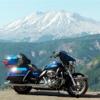
Historic Highway 99 Association of California
Road Warrior replied to Michael Ballard's topic in Pacific Highway / U.S. 99
Excellent site! It is great to see others helping to preserve the Pacific Highway. Curt Cunningham -
I saw this in the April 21, 1921 issue of the Oregonian about the 1903 Ford Model A, the first on the west coast.
-
The Olequa Bridge was built in 1872, by the Northern Pacific Railroad. The bridge was abandoned about 1910 and the old right of way became a highway in 1927. The highway bridge was removed sometime the in late 1950's. https://www.pacific-hwy.net/olequa.htm
- 1 reply
-
- 1
-

-
Here is my story of the old Mud Road, better known as the Fort Vancouver to Fort Steilacoom Military Road completed in 1861. The was the first wagon road through the Cowlitz Corridor between Portland and Olympia. After the Northern Pacific Railroad was completed in 1872, between Kalama and Tacoma, the road began to fade away. https://www.pacific-hwy.net/westside.htm
- 1 reply
-
- 1
-

-
This section of the old highway is one of the oldest roads in the state of Washington. This road was built about 1839 after the Puget Sound Agricultural Company (PSAC) began to farm on the Cowlitz Prairie. The PSAC was a subsidiary of the Hudson's Bay Company. This road was originally about a mile long an ran between Simon Plamondon's farm, the Cowlitz Mission and the PSAC farm, which was known as the Cowlitz Farms. Plamondon was a retired HBC employee who arrived at Washougal 1816 and started work for the HBC. He and retired in 1837. John McLoughlin asked him if he would settle on the Cowlitz Prairie as the British were trying to establish settlements north of the Columbia so they could make the river the international boundary. Plamondon agreed and that was the beginning of the Cowlitz Settlement. The French-Canadian families living in the Willamette valley, petitioned in 1834 for Catholic priests. The priests were approved to come to Oregon and start a mission, but had to depend on the HBC to get them there. They agreed to transport them on the condition they build the church north of the Columbia at the Cowlitz settlement, to bolster the British presence north of the river. The church agreed to the request and Fathers Blanchet and Demers opened the Cowlitz Mission in 1839. This road was used to get from the settlement to the church. This section of road became the Pacific Highway in 1915 and the attached old photo was taken about a mile north of the Plamondon road. I attached a drawing of my best attempt at a duplication of the 1853 BLM map on a Google map. Happy trails Curt
-

Original Pacific Highway Identified
Road Warrior replied to Keep the Show on the Road!'s topic in Pacific Highway / U.S. 99
Finally made it out to Lewis and Clark State Park. to see the old highway. Here is the webpage I created about the Jackson Hill. https://www.pacific-hwy.net/jackson_hill.htm Happy trails Curt -
The Whipple Creek Crossing was a part of the main trunk wagon road from Vancouver, WA north to Olympia. built in the mid 1860's. In 1900 this road became State Highway "1", then in 1915 it became the Pacific Highway. In 1921 this crossing was abandoned. Today A new bridge is being built in the spot of the old long gone wooden bridge. The Columbian wrote up a story on the Whipple Creek Crossing. http://www.columbian.com/news/2018/mar/16/new-bridge-spans-old-route-whipple-creek/ My photos and article are at this link http://www.pacific-hwy.net/whipple.htm Happy trails Curt
- 1 reply
-
- 1
-

-
Hello In Clark County, Washington a new bridge over Whipple Creek is being built that will reconnect a portion of the old 1915 highway that is today's NE 10th Ave. just north of Vancouver, WA. The old bridge was removed in 1922 when the road was rerouted and this section was abandoned for almost 100 years. When most places are tearing up history here we have progress reconnecting a historic route. I added maps and photos on my website. http://www.pacific-hwy.net/whipple.htm As it gets warmer I plan to retrace the route again and report updates. I am now retired and can pursue my hobby.
-
Excellent post Dave The ice age had carved out many features in our state. Being so close to the freeway makes this a nice little stop. The scenery is spectacular. I have a old photo on the construction of the road. I am pretty sure it was taken in the same spot as your first one. The other is from where you enter the coulee. The third is from mt trip there. Curt
-

First Road From Fall City, Wa To Snoqualmie, Wa
Road Warrior replied to Road Warrior's topic in Abandoned Roads
After more research this road was actually built in 1865. Because the Cedar River trail was too brutal to the animals and people who traveled on it. This road was abandoned in 1894 when the route was moved to the north of the river to Snoqualmie Falls. -
The First Fall City to Snoqualmie Road This is the original route from 1883 built by pioneer Jeremiah Borst that went up to where the train depot would be built before the NP made it there. The road continued on to Snoqualmie Ridge and down into Snoqualmie and the Borst property. This is the most feasible route to Snoqualmie from Fall City if you had to walk. The depot was built there because it was the best place due to the terrain but also it was because (my opinion) it was on the new county road between Snoqualmie and Fall City. There was no need to build a road as it was already there. Before that (1860s) The road was more of a cattle trail (while wagons could use it) from Fall City to the Borst Cabin over the Snoqualmie Ridge. In the 1850s people traveled to Seattle from Yakama pass along the Cedar River. In 1867 the road was changed to North Bend and Fall City over the Snoqualmie River route to the Snoqualmie Pass. The Cedar River route remained a footpath. That section to the cemetery may have been started then. From 1858 to 1865 Yakama Pass was referred as Snoqualmie Pass. Hence the confusion. This all coincides with the incorporation of Fall City. Most of the current streets are from the 1880's. And that little strip of road up to the cemetery was an original section of the Snoqualmie road to the pass that connected to the Toll Road in 1883. The Toll Road started at the Borst Cabin (about River street in Snoqualmie) then to Easton. This is the reason I think it is important. As it is the very first road east out of town when the town was first settled. It stayed that way until sometime into the 1890s I am still researching that part. Here are some of my findings to support my opinion. I saw an advertisement that pioneer Jeremiah Borst was selling tracts of his land in the 80s. I forgot to save that one and can't find it when I looked again. Borst in about 1877 had a vested interest in that section of road at the time. This is the year he have may begun the work. This is a snippet from the Wagon Road Act of 1875. SEC. 7. Whenever the sum of five thousand dollars shall have been realized, said commissioners shall meet as soon as practicable at the house of Jeremiah W. Borst, on Snoqualmie prairie, and after having been duly qualified as provided in section six, shall proceed to view and locate a road between the two points named in the first section of this act, by the nearest practicable route. Said trustee shall also receive said ten per cent. of said net proceeds, and without delay pay the same to E. P. Boyles, George Taylor and S. R. Geddis of Yakima county, and Jeremiah W. Borst and Rufus Stearns of King county, who are hereby constituted a board of commissioners to superintend the expenditure of all moneys realized for the benefit of said road, under the provisions of this act. He was to receive 10% of the proceeds for his work on the road. Even though the lotteries were cancelled I saw an article from 1878 that said $180 was spent on the road from the lottery proceeds. He must have built it regardless, due to the fact he would become rich selling his land as the price would increase if there was a highway from Seattle that came through his property. There already was a cattle trail so it just needed improvements. That is why the maps shows a trail between Fall City and Snoqualmie in the 1873. In 1873 the map shows the road finished just past where the depot was. This is why I believe that the strip is historically significant to Fall City and Snoqualmie. This was the very first wagon road to link the two towns. The maps show the abandoned road and the picture is from an intact part of it that leads up to the cemetery in Fall City. ( about 300 feet) My Snoqualmie Road page is up but i need to rewrite the history part. www.sunset-hwy.com/wagon.htm Happy trails Curt
-
Here are my latest then and now photos. They both were taken on the west side of Snoqualmie Pass. The road opened last week. There wasn't many downed trees. The water though was full of gravel but the water was flowing though it. The brush around the though had been cleared by someone so it is easy to spot. Curt
